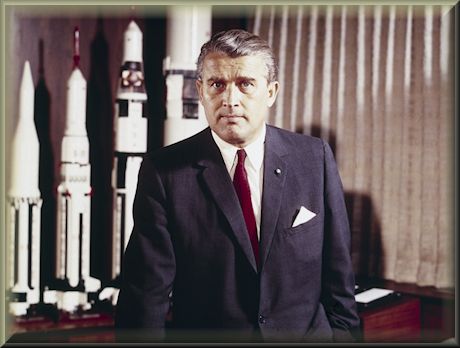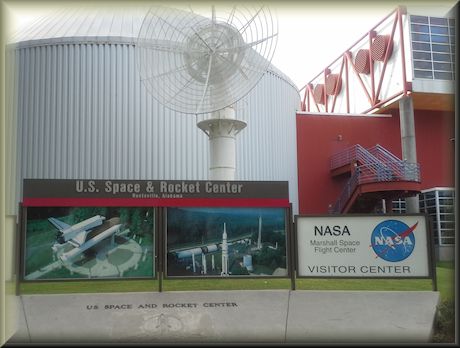 For anyone who grew up in the 1960s or earlier, what could better symbolize brave new worlds with visions of the future than when the Apollo 11 mission landed on the moon.
For anyone who grew up in the 1960s or earlier, what could better symbolize brave new worlds with visions of the future than when the Apollo 11 mission landed on the moon.
I am not a rocket scientist, nor is space craft or space exploration in my area of expertise, but I followed the NASA space program as I was growing up. One of the most vivid memories I have from my childhood is watching my parents old black and white television on the night of July 20, 1969. At 10:56 p.m. EDT, American Astronaut Neil Armstrong is ready to plant the first human foot on another world. With more than half a billion people watching on television, he climbs down the ladder and proclaims: "That's one small step for a man, one giant leap for mankind."
The Apollo 11 space craft that carried the astronauts to the moon was powered by the Saturn V rocket created by a team of rocket scientists lead by Dr. Wernher von Braun. Rocket science is generally accepted as being intellectually difficult and outside the capabilities of the average person. When someone is asked to do a relatively undemanding task they are reminded that what they are asked to do is not rocket science. Being in charge of the team that sent the first rocket to the moon is pretty high up on the list of achievements in Geek History.
From German Nazi Party SS to NASA rocket scientist
Wernher von Braun was born in 1912 in Wirsitz, Germany. According to a NASA biography of von Braun, as a youth he became enamored with the possibilities of space exploration by reading the science fiction of Jules Verne and H.G. Wells. As a young man von Braun joined the German Rocket Society. In 1932, von Braun joined the German army to work on the development of ballistic missiles. By 1937, he was the leader of the Nazi rocket program that developed the V-1 “buzz bomb” and the deadly V-2, the world’s first long-range guided ballistic missile. Wernher von Braun was known as the "Father of German Rocket Science."
Not only was von Braun a Nazi, but he was also member of the SS, a major paramilitary organization under Adolf Hitler and the Nazi Party. The SS, along with the Nazi Party, was declared a criminal organization by the International Military Tribunal, and banned in Germany after 1945. In the closing days of World War II, von Braun and a group of his rocket scientists surrendered to American forces. They were embraced by the United States government and began working for the Army on rocket technology.
In 1957, von Braun's team worked to launch the first U.S. satellite. Explorer 1 was launched on Jan. 31, 1958. Von Braun and his team were transferred from the Army's control to NASA's when the National Aeronautics and Space Administration was established in 1958.
Von Braun became director of NASA's Marshall Space Flight Center (MSFC) in Huntsville, Alabama, in 1960. As head of NASA's Marshall Space Flight Center, von Braun lead the development of the Saturn V booster rocket that helped land the first men on the Moon in July 1969. Dr. von Braun served as Marshall's first director from 1960 until his transfer to NASA Headquarters in 1970.
The legacy of von Braun
There is also a dark side of the von Braun story that is outside the realms of Geek History. Prior to coming to the United States, von Braun and his team developed weapons of war for a ruthless government associated with hate crimes and torture. Wernher von Braun was a high ranking officer in the German Nazi Party during World War II that used concentration camp prisoners as slave laborers in the rocket program.
Should von Braun be remembered as the father of rocket technology or a Nazi Party war criminal? When asked what is the legacy of rocket scientist Werner von Braun, it is very difficult to balance his work with the German Nazi Party against his achievements with NASA. There are many people who applaud von Braun as a great scientist. You can also find many commentaries who condemn him as a Nazi war criminal.
We remember von Braun here at the Geek History website for his accomplishments as a rocket scientist for NASA. The contributions of von Braun and his colleagues in creating the technology that put a man on the moon is pretty high in geek significance. Von Braun and his team at NASA developed rockets to explore new worlds, and for that he is remembered as a brilliant scientist.
U.S. Space and Rocket Center in Huntsville, Alabama I highly recommend anyone interested in learning more about space travel and the history of the Saturn V rocket visiting the U.S. Space and Rocket Center in Huntsville, Alabama. As much as it is a Space and Rocket Museum, putting it into perspective, it is a Space and Rocket History Museum. Wernher von Braun had a big influence on the development of rocket technology as well as the establishment of the museum in Huntsville, Alabama. In addition to numerous space and rocket exhibits, there are also many items which help to learn more about Wernher von Braun, the scientist and the person.
I highly recommend anyone interested in learning more about space travel and the history of the Saturn V rocket visiting the U.S. Space and Rocket Center in Huntsville, Alabama. As much as it is a Space and Rocket Museum, putting it into perspective, it is a Space and Rocket History Museum. Wernher von Braun had a big influence on the development of rocket technology as well as the establishment of the museum in Huntsville, Alabama. In addition to numerous space and rocket exhibits, there are also many items which help to learn more about Wernher von Braun, the scientist and the person.
With indoor exhibits, outdoor exhibits, and an IMAX theater, the U.S. Space and Rocket Center is a top notch educational complex in the same class as the Smithsonian's National Air and Space Museum, or the Kennedy Space Center. An absolute must see for anyone who loves technology.
Most Americans outside of Huntsville, Alabama probably would not associate Wernher von Braun with the space program. Initially I had planned to have a page on legendary rocket man Wernher von Braun under the section of famous geeks. But as I started gathering up photos and information from NASA, I realized that my tribute to geek history needed a section on space exploration.
This page will serve as the front door to the Geek History section on space exploration, as additional pages are added they will appear on the list of other pages in this section below.
